EBR charges a service fee to manufacturers to produce ebike reviews and videos, this began in 2018. It’s the same flat fee for each video, and it helps us to keep the site going while limiting ad clutter. We appreciate the opportunity to serve you with our opinions and data but respect your right to know that we receive compensation :)
The E-CORE Di2 FS 27.5+ is one of the first models from Bulls to feature the new mountain-specific Shimano STePs E8000 mid drive motor. It’s well balanced, beautiful, and stealty with a downtube-integrated battery and all-black color scheme. This is one of the top-end electric bike models in the Bulls lineup for 2018 and that is reflected in the ~$6k price point. For the money, you’re getting name-brand components throughout, three frame sizes to choose from, and electronic shifting. I had a blast riding this bike in the hills near Los Angeles, California, and was able to compare its performance back-to-back with Bosch and Brose powered electric mountain bikes (also from Bulls). My takeaway was that the motor seemed to require a bit more pressure and time to engage, and that it cut out less smoothly around 20 mph (which is the maximum assisted speed) than the other two. However, this motor is also lighter and provides a standard Q Factor verses the often wider setup on other bikes. The cockpit is extremely clean and streamlined, you change assist levels using the exact same trigger shifter design as you use to switch gears. This is an electric mountain bike that blends in and satisfies the Class 1 designation, to be allowable on more trails. It’s relatively quiet at low power, with slower pedaling, but can whine a lot when the power gets turned up and you start to pedal faster. I thoroughly enjoyed the longer travel suspension, bigger tires, and shorter chain stay (enabled by the compact motor design and spindle position), and I trust Shimano as a company. In a way, this is more of a purist electric mountain bike… similar to the Specialized Turbo Levo. It’s not as quiet or smooth, but the control interface is easier to use and Shimano provides a competing E-Tube smartphone app for fine tuning performance.
Driving this ebike is a brand new motor system from Shimano. Their previous (and still used) motor focused on neighborhood and urban applications with up to 50 Newton meters of torque output and lower 100 RPM max assist speeds. With the E8000, Shimano is targeting trail and mountain applications with up to 70 Nm of torque and full 120 RPM support to match Bosch. For riders who like to spin, this is a great thing. It means you can achieve higher top assisted speeds WITHOUT having to shift gears. That’s a big deal when navigating varied terrain with ups and downs. It’s nice to have room to ride the bike vs. dealing with settings. Ebikes tend to be heavier, and the motor helps to make up for that, but keeping momentum and flow means you have to control the bike with your body and the three aspects of that are steering, pedaling, and positioning body weight. And so, for me it’s critical to have power when I want it and a range of pedaling options… all without switching gears or assist settings, and I feel that you get this experience with the E8000. It is not as smooth to start, there’s almost a click where the motor kicks in. And again, when you reach the maximum assisted speed of ~20 mph, the motor cuts out a little quick. This isn’t a bad thing, it’s just different than Brose, which I consider to be the smoothest, and Bosch, which offers eMTB mode now for a wider range of power in a single assist setting. Just like those two, I believe that the the Shimano motor controller is listening for rear wheel speed, pedal cadence, and pedal torque. My favorite parts about this motor are how it looks, how little it weighs (6.35 lbs vs. 8.8 lbs on the Bosch CX), and the narrower Q Factor (crank spacing). It was designed from the ground up to work with a standard sized chainring and not have a reduction gearing system that could create drag above assisted speeds and to position the spindle further back to keep the chain stay distance short and provide a snappy ride experience.
Powering the bike is a beautifully integrated Lithium-ion battery pack, mounted up into the downtube. Weighing in at ~5.73 lbs, it’s also lighter than the Bosch Powerpack 500 (which is one of the lightest batteries around with a similar, slightly lower, capacity). Truly impressive, the Shimano pack offers 36 volts and 14 amp hours for a total of 504 watt hours of capacity which should provide 30 to 60 miles of range per charge. Filling the pack a great experience because the charger provides 4 Amps of flow vs. just 2 Amps seen on many competing products. The pack does weigh a bit more, about two pounds total, and is bulkier than I’d like… but I LOVE that it does not require a dongle adapter to charge the battery directly. Many of the other, older, Shimano chargers and batteries had this little block thing that stuck to the end of the charging cable and allowed you to plug into the battery (which used a different interface than the bike itself, when the pack was mounted). With the latest design here, the exact same charging port is used to charge the pack whether it’s mounted or not. And the battery does lock securely to the frame, there’s a locking core just above the charging port and it’s nice that both of these interfaces are further away from the crank arms. I do feel like there’s some flexibility and kneeling required to get at the battery and charge it compared to a side-mounted interface. I guess there are always trade-offs, the power button is also on the battery pack, near the left edge so you can reach it by bending forward a bit when mounted on the bike. This battery approach is good, but not perfect. I love that it’s coated with rubber and that the charging port has a little rubber flap to keep dust, mud, and water out. I guess the biggest trade-offs are how easy it is to remove from the frame (something I do whenever I put my bike onto a car rack, to reduce weight), and how easy it is to charge and then activate for riding.
The cockpit is very minimal and neat. It seems to trade convenience for durability and stealthiness. In short, the power button is way down on the battery and the display screen changer button is this little round button positioned below the display, not within reach of either grip. You cannot cycle through readouts without taking one of your hands completely off the bar and then carefully pressing up on a tiny rubber circle that’s about the size of a round eraser built into the end of a pencil! Even when stopped, if you’re wearing gloves, this button seems a little small. Perhaps it’s not an issue for most riders because all you really need to do is turn the bike on and then click the left trigger shifters to navigate from Off to Eco, Trail, or Boost… and then pedal. But if you never press this little rubber button, you won’t see your distance, odometer, range estimate, trip time, average speed. You’ll just see your current speed or pedal cadence (those are the only two readouts that stay put when you cycle to them). To me, this is a purist decision, one that favors symmetry and tradition over usability. But, it’s not bad. I’m the kind of rider that prefers the extra large Bosch Intuvia or Brose center displays because I cannot read fine print and those products have easy to reach rubberized buttons that do many things. Perhaps my favorite part of the compact Shimano display is that it provides readouts for both motor assist, lights (if you had them integrated), and gearing because of the electronic shifting used on the E-Core Di2 FS 27.5+ model. I love how snappy the gears changed, that they would stay true longer because there’s less cabling to get stretched, and that I could still do multi-step shifts. It really is neat to have trigger shifters that click (on both bars) that really aren’t pulling any cables, just sending electronic signals. The drivetrain here is tight, and even provides a one-way clutch system to reduce or increase tension on the chain, which can reduce bounce and drops. This is a different sort of electric bike, one that seems to be chasing the pure cycling experience and layout while stuffing in the latest and greatest technology throughout.
This bike is setup well to handle the additional weight that most electric-assist products come with (the motor and battery) while providing a snappy, powerful experience. Larger plus sized tires provide increased traction and float as well as comfort. They ride a bit like 29ers because you start with a 27.5″ diameter and add 2.8″ onto that, which means rolling momentum, a lower attack angle that spans cracks instead of dropping in or bouncing, and decreased deflection off of rocks. The medium sized Bulls E-Core Di2 that I rode weighed in around 53.6 lbs, and it keeps much of that weight low and center. Unsprung weight is kept to a minimum and I did not experience frame flex when dropping off of large rocks and cornering hard while standing and pedaling. It stops well, the two-finger adjustable-reach Magura MT5 levers are lightweight and easy to use. In addition to having the more compact motor design, it’s tilted up and has a metal skid plate below so you get excellent clearance and some added protection if there is a hard strike. While riding on paved streets to the mountain bike trail for the video review, I was able to hit 39 mph and felt safe and stable. And later, I was able to walk up some steep sections of trail with help from the ebike motor because this system has walk mode! Just hold the lower left trigger down for a few seconds to activate, then hold down again to use it. There’s so much explore and appreciate when new systems come to market, especially from leaders like Shimano. Bulls, for their part, has done a great job interfacing with the new drive system and they have a high-quality growing network of dealers in the US that set things up correctly and provide support for the two-year comprehensive warranty (5 years on the frame). I’d like to thank Bulls for partnering with me on this post and as always, I welcome comments and feedback here and in the Bulls ebike forums.
Pros:
- Premium Schwalbe Nobby Nic plus sized tires in a 2.8” configuration, the fatter design provides increased traction, float on soft terrain, and comfort
- With 150 mm highly adjustable air suspension from RockShox front and rear, this ebike could handle trail and enduro rides, I like the visuals of the black annodized stanchion coating and this is an upgrade to protect the aluminum tubing and provide slicker movement
- Excellent weight distribution with both the motor and battery low and center on the frame, Shimano makes one of the lightest motors and battery packs given their power and capacity ratings
- The Shimano E8000 motor is mountain-specific, delivering higher peak torque up to 70 Newton meters vs. the standard Shimano E6000 which offers 50 Nm, it’s a bit louder and will drain the battery faster but performs very well on steep, rugged terrain
- I love how the locking core that retains the battery and the charging port are both located higher up on the downtube, completely clear of the crank arms and water, dust, or mud that could get kicked up as you ride
- The motor itself is very compact, positions the crank arms further back to reduce chainstay length (for a snappier ride), and is angled up to maximize trail clearance, I believe that it uses a traditional Q-Factor as well so the crank arms aren’t pushed out as wide as some other ebikes
- Because Shimano has designed their electric bike motors to work with standard sized chainrings, you can change the sizing easily aftermarket, there’s also no mechanical drag because of a reduction gear when pedaling unassisted or beyond the maximum assisted speed of 20 mph
- The chainring uses a narrow-wide tooth pattern that grabs the chain more securely (preventing drops and slips), and there’s even a plastic full-surround guide which can clear debris and ensure it doesn’t bounce off track in even the roughest sections
- Extra wide gear range in the 11-speed cassette, you get 11 to 46 tooth sprockets and an upper mid-level derailleur with Shadow Plus one-way clutch (push the grey lever into the up position to tighten the chain and further reduce bounce), shifting is done electronically on this bike which means it is faster, more exact, and won’t suffer as much from cable stretch over time
- Most motors, batteries, cable housing, rims, cranks, tires etc. are all black, and because BULLS opted for an all-black frame in this case, everything blends together and it helps to hide the battery and motor so the bike is more stealthy
- Wider Boost hub spacing with sturdy thru-axles provides spoke strength and power transfer for steering and pedaling + motor support in the rear, it’s tougher
- Super clean cockpit with ebike controls that imitate shifters, the display is smaller than a lot of competing products and allows you to manage gears as well as motor assist levels
- The E-Core Di2 FS comes in three frame sizes and has an open-position seat post dropper, so different sized riders can enjoy riding the bike and mount more easily while also transitioning smoothly between different stances and terrain, many competing seat post droppers have fixed heights but this one is open
- Minor pros here, the addition of bottle cage bosses on the downtube is great, especially given the downtube-integrated battery pack, I like the thin locking ergonomic grips
- Very nice hydraulic disc brakes, Magura MT5 with quad-piston calipers up front to spread out heat and provide better grab, nice to see considering that both rotors are 180 mm vs. a 200 mm up front on other high-end enduro models, I believe that the reason they used a dual-piston caliper setup in the rear was to save weight
- It seemed like the power button to switch the ebike systems on is actually on the battery pack (on the left side of the base of the downtube) which requires a bit more reaching and is different than most other systems with handlebar on/off switches… except for the Specialized Turbo Levo models which also have a control pad on the downtube, I guess it’s stealthier this way, more hidden on the frame?
- Shimano does offer a smartphone application called the Powertube App which allows you to adjust more settings, I believe their system can also connect with heart rate monitors using ANT+ wireless, it’s neat that you can just hold the circle button on the base of the display and get access to so many menus (including the ability to turn off beeping noise)
- Compared to the city-oriented Shimano E6000, the mountain-oriented E8000 has a higher RPM support, so you can spin up closer to 120 and not have to shift as much to hit higher speeds
- The rear suspension design seems like split-pivot which is meant to keep travel more vertical than arking, this reduces chain kickback as you pedal and travel over different types of terrain
Cons:
- While I really appreciate the higher energy output of the 4 Amp battery charger, that it only weighs ~2 lbs, and that there’s no extra dongle adapter to plug it in (on or off the bike) I feel that the charger itself is larger and bulkier than some of the competition which takes up space in a backpack if you’re on a long trail ride
- The higher powered motor systems like the one used here tend to require more energy and tend to produce more noise (especially when riding in the top levels of assist), this is often covered by the sound of your tires on the path or the wind but it’s not completely silent
- It’s nice that the display is compact and wellprotected but you cannot adjust the angle for glare or remove it easily, I found that the settings button along the bottom edge can be tricky to press and is positioned too far over from the right grip to interact while riding, you might have to stop and take your hand off the grip to change display readouts
- In my experience, the Shimano STePs E8000 motor doesn’t start as smoothly, there’s like a step / click where it activates and that requires slightly more pedal force
- Considering that Shimano made the electronic shifting drivetrain and motor plus motor controller, I was surprised that there wasn’t any sort of shift detection or communication between the systems to reduce strain on the chain, sprockets, and rear derailleur
Resources:
- Official Site: http://www.bullsebikes.com/product/e-core-evo-en-di2-27-5-copy/
- More Pictures: https://photos.app.goo.gl/NRyjZzZI5EYlBb842

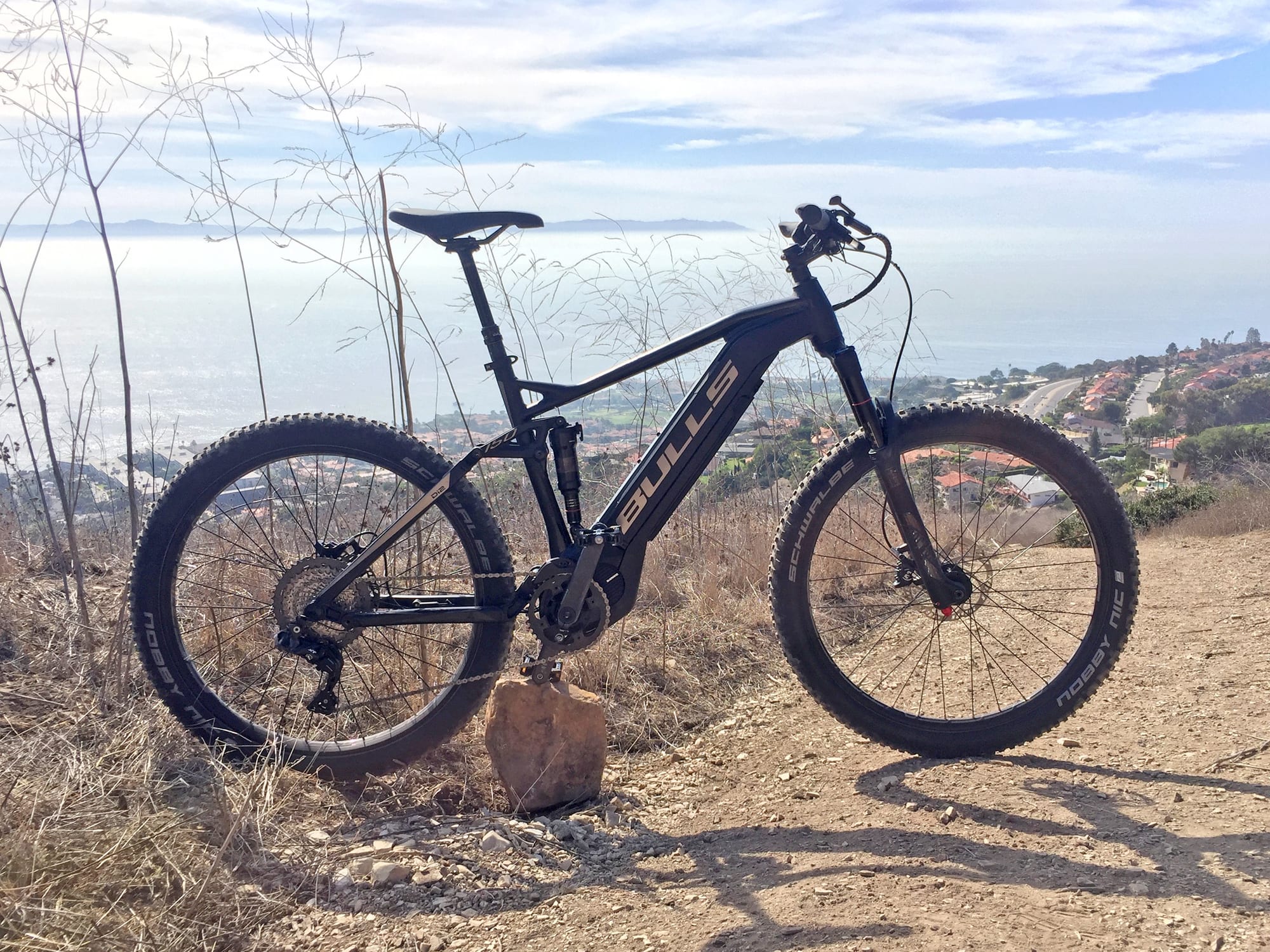
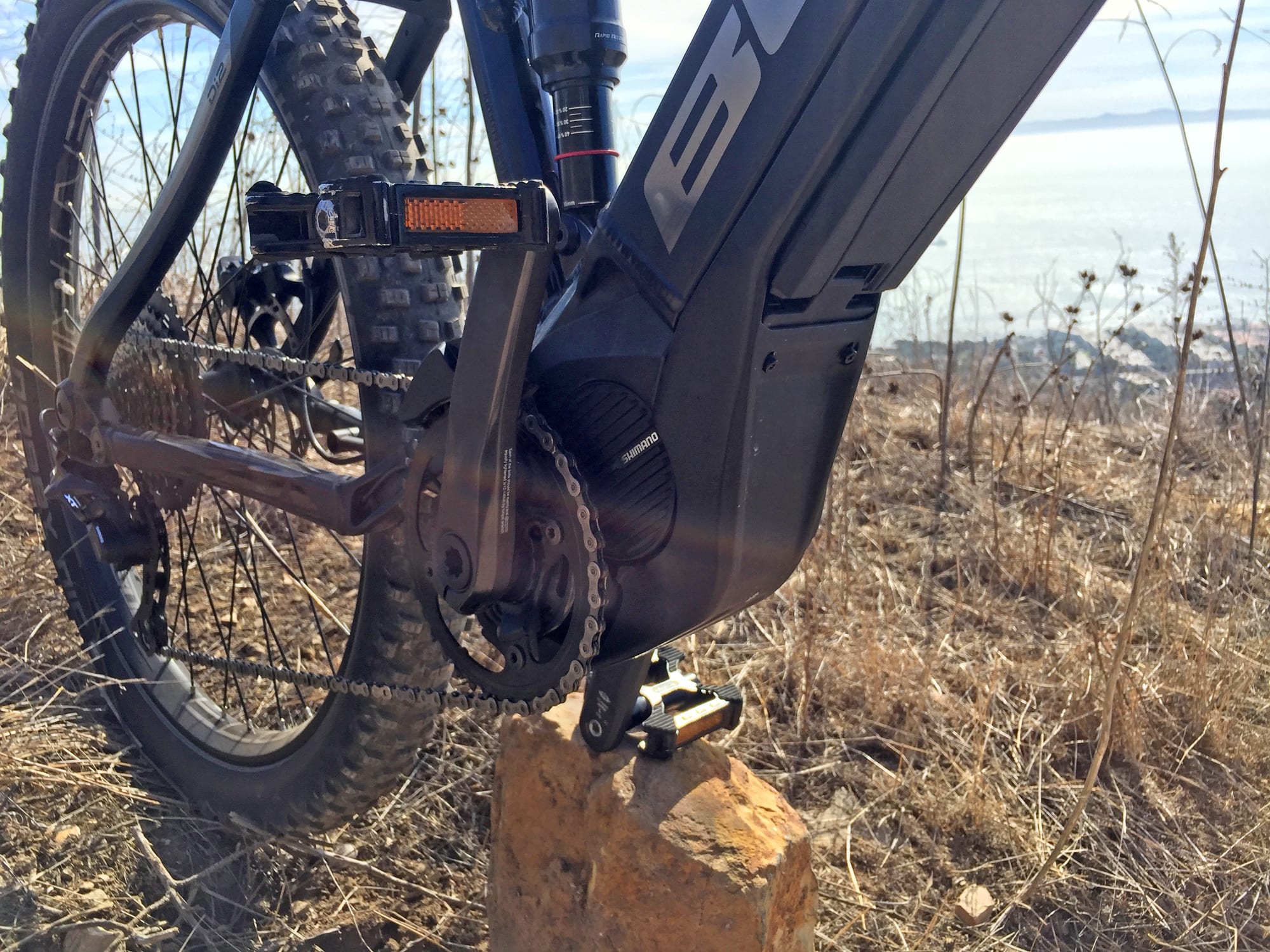
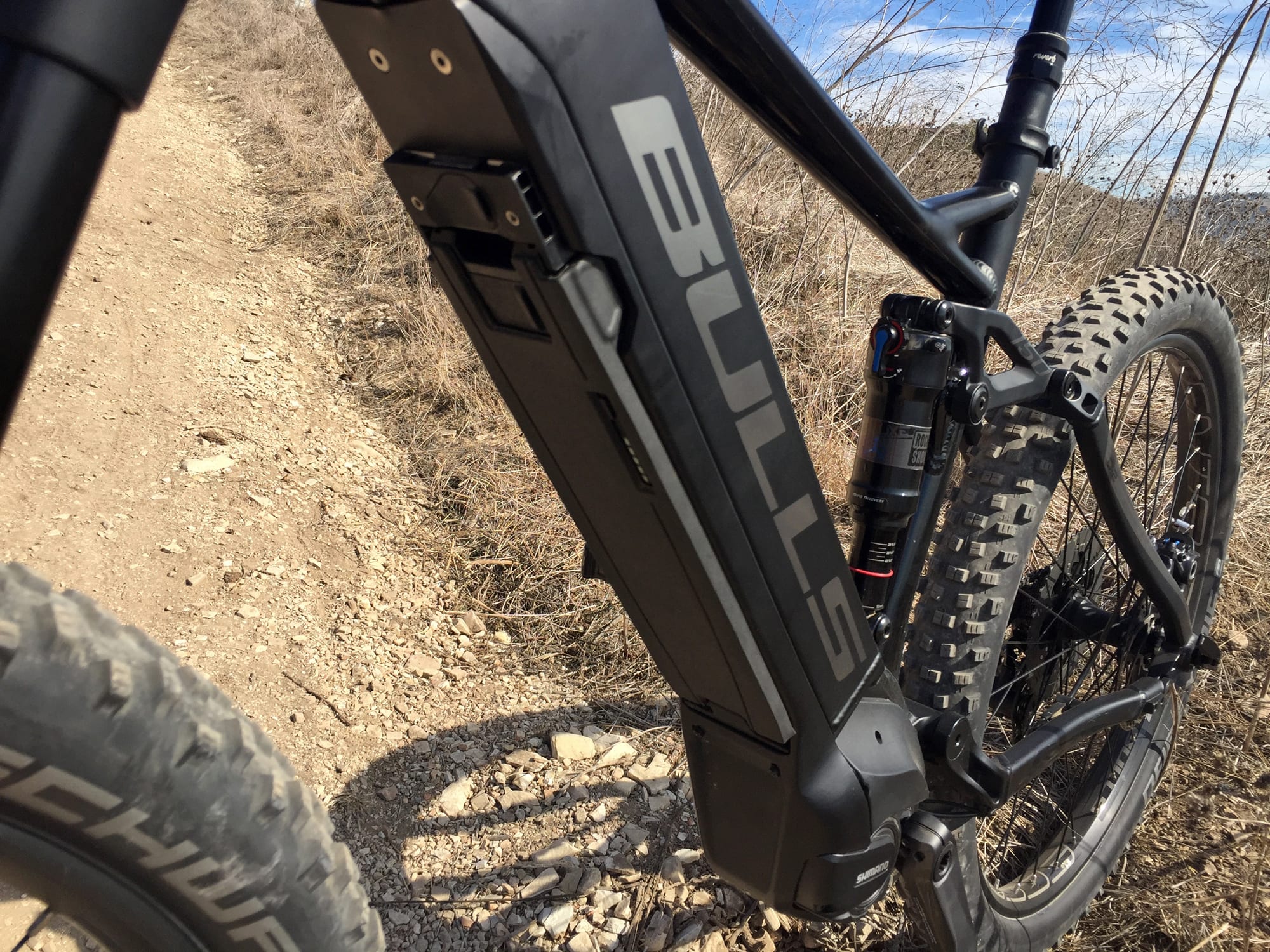
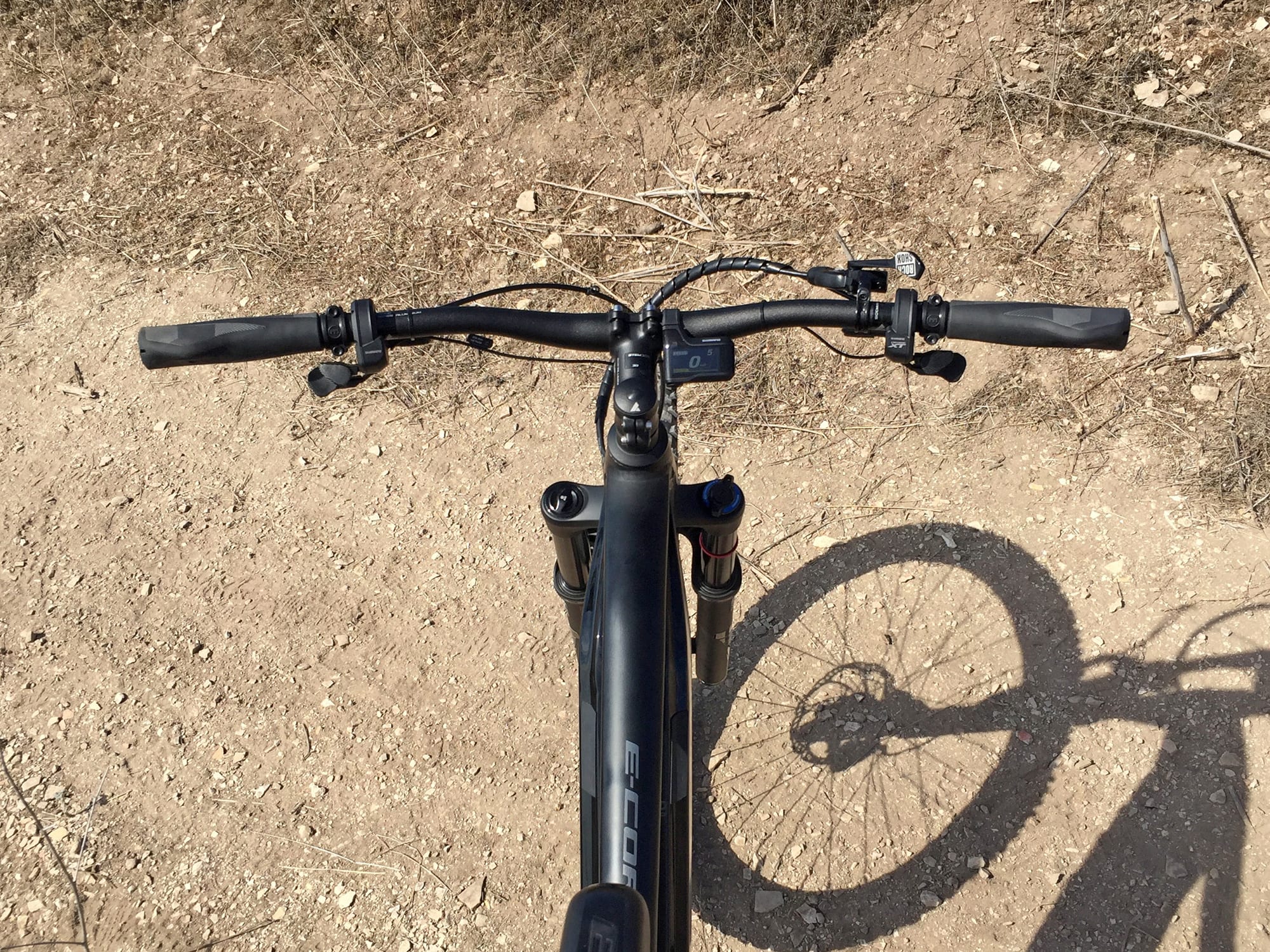

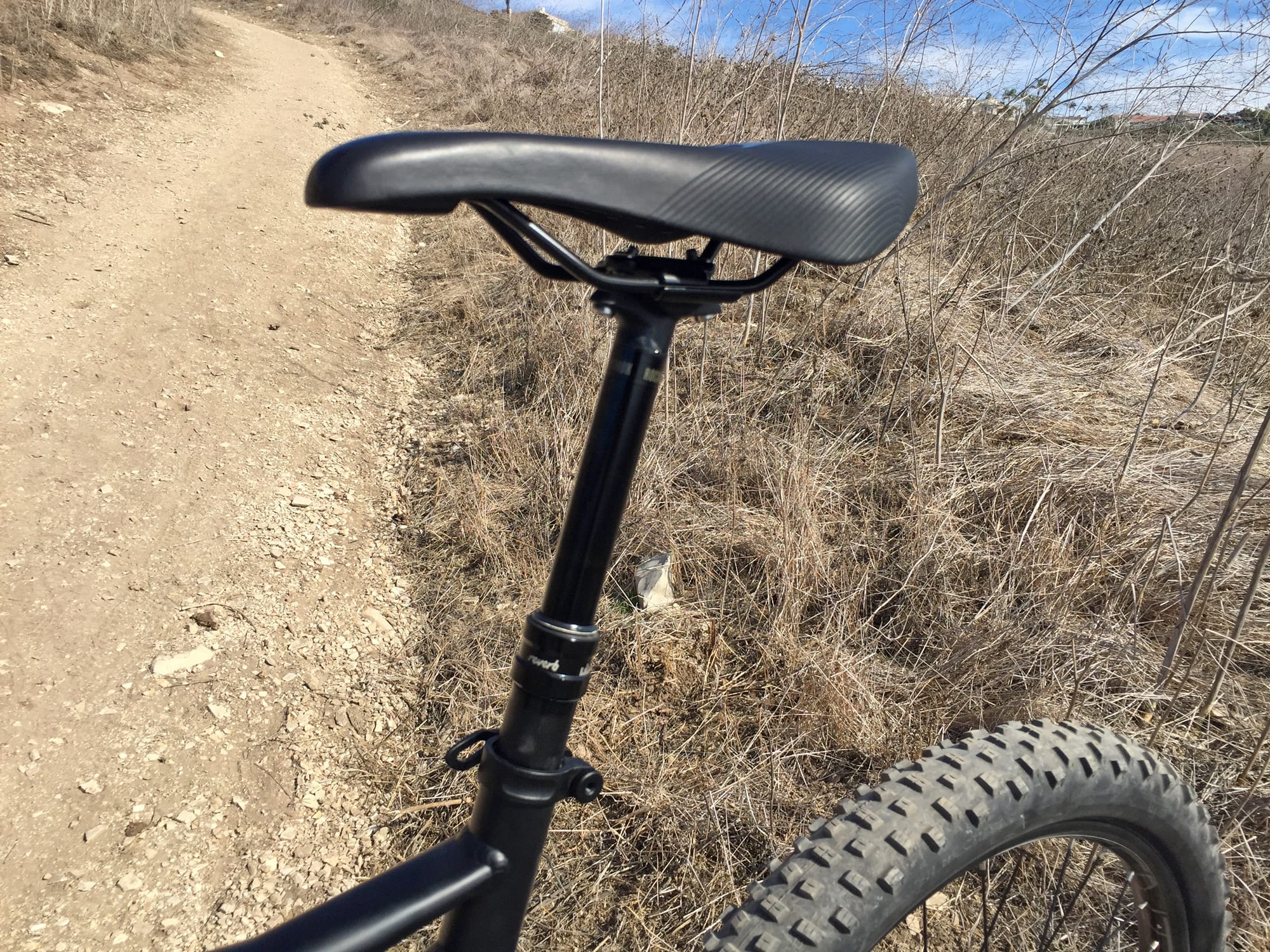
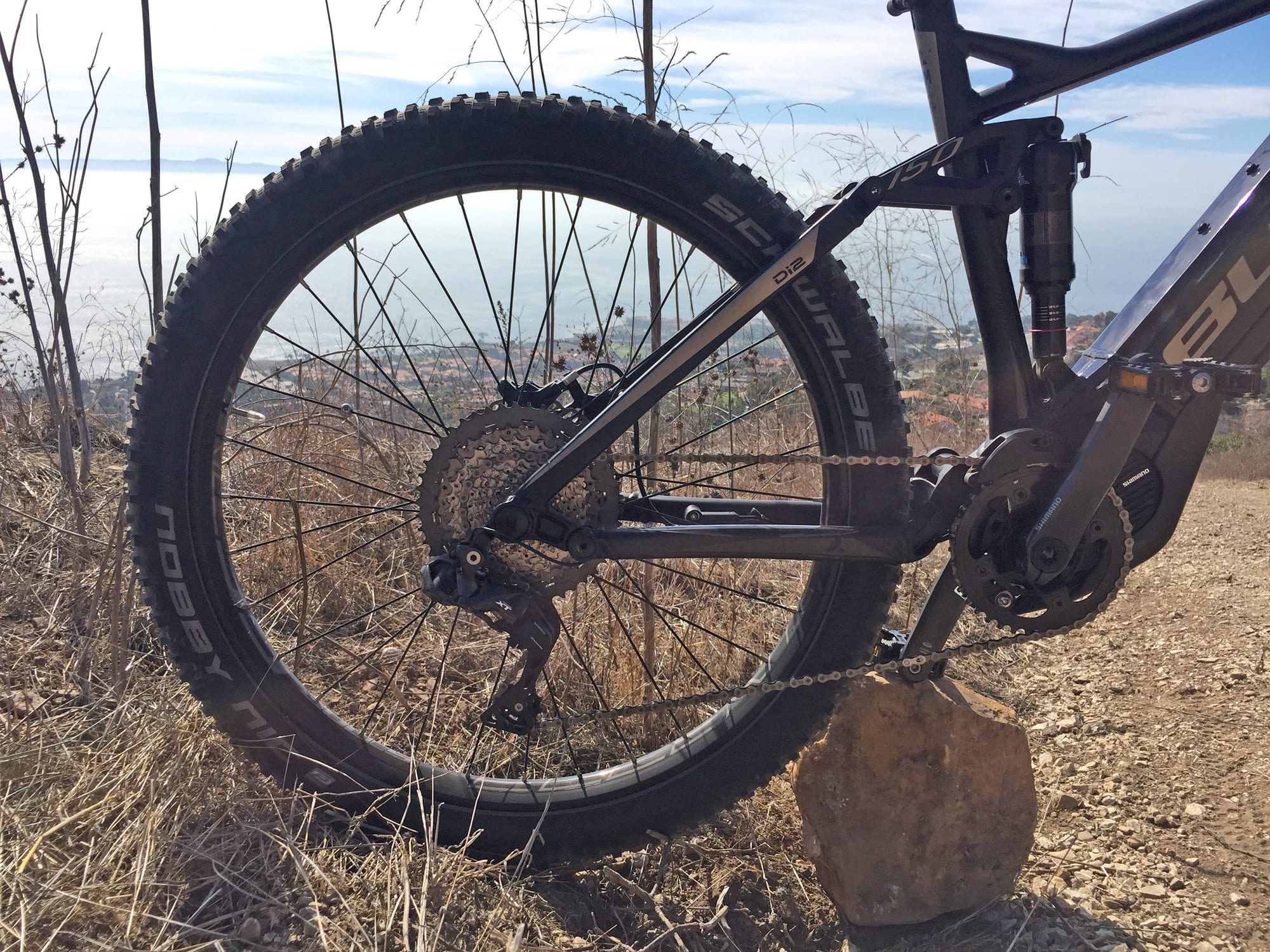
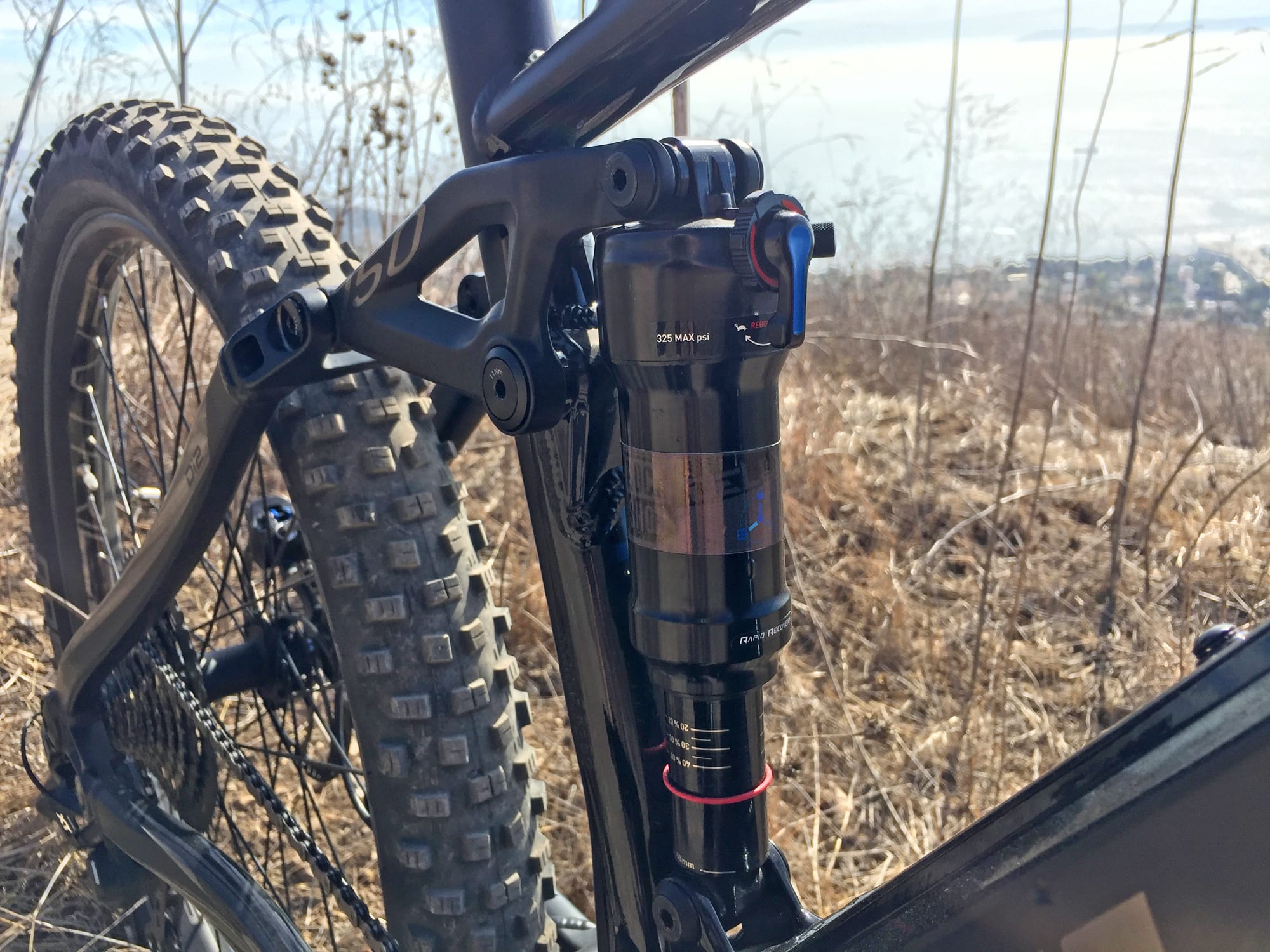


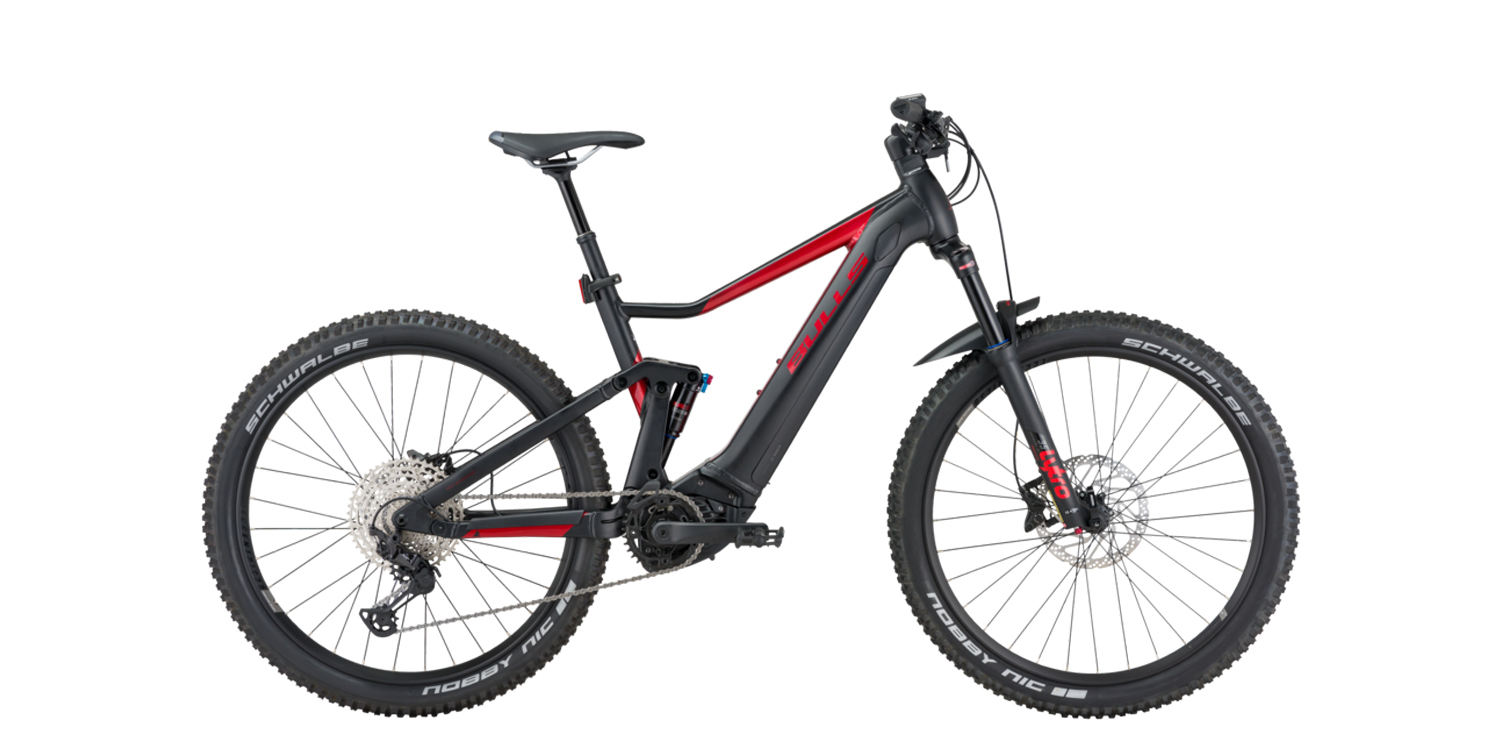
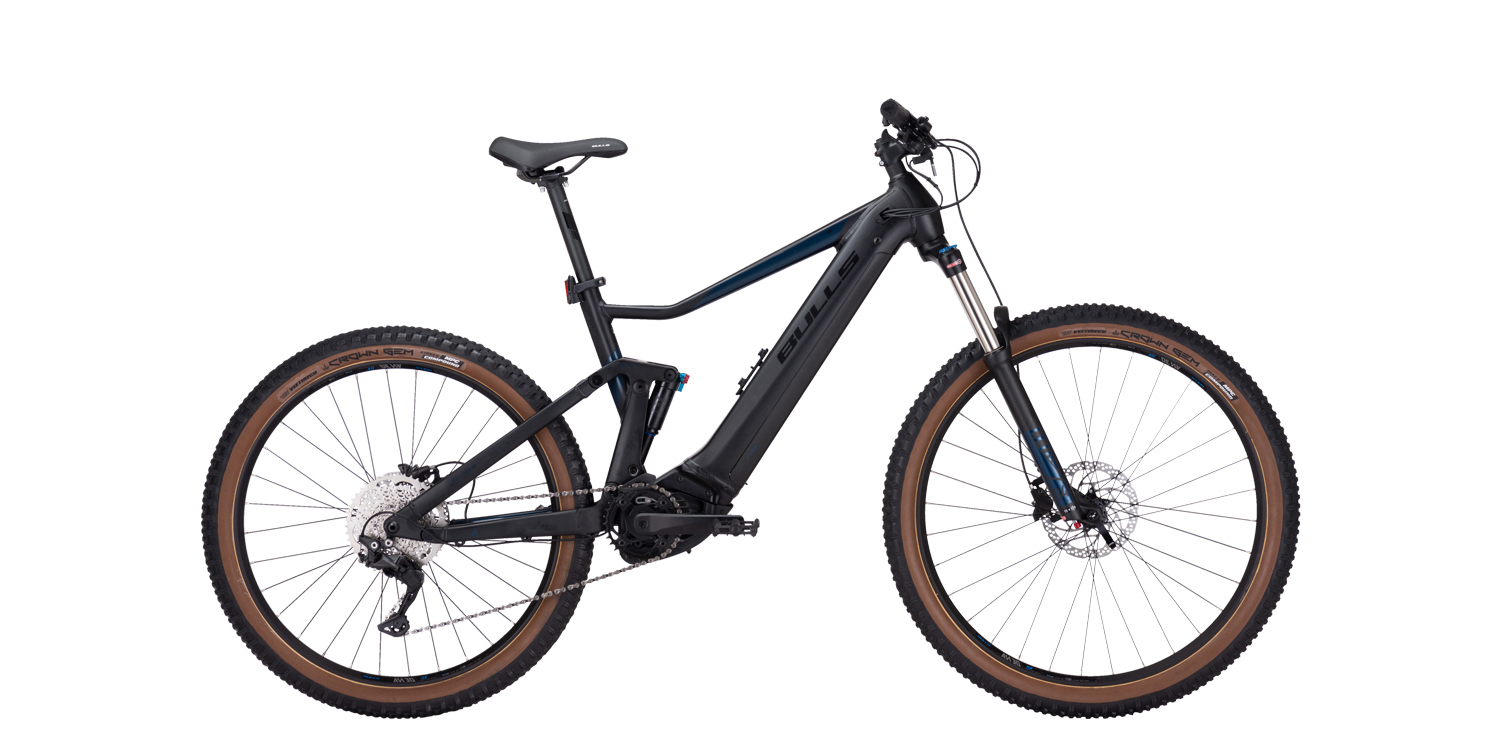
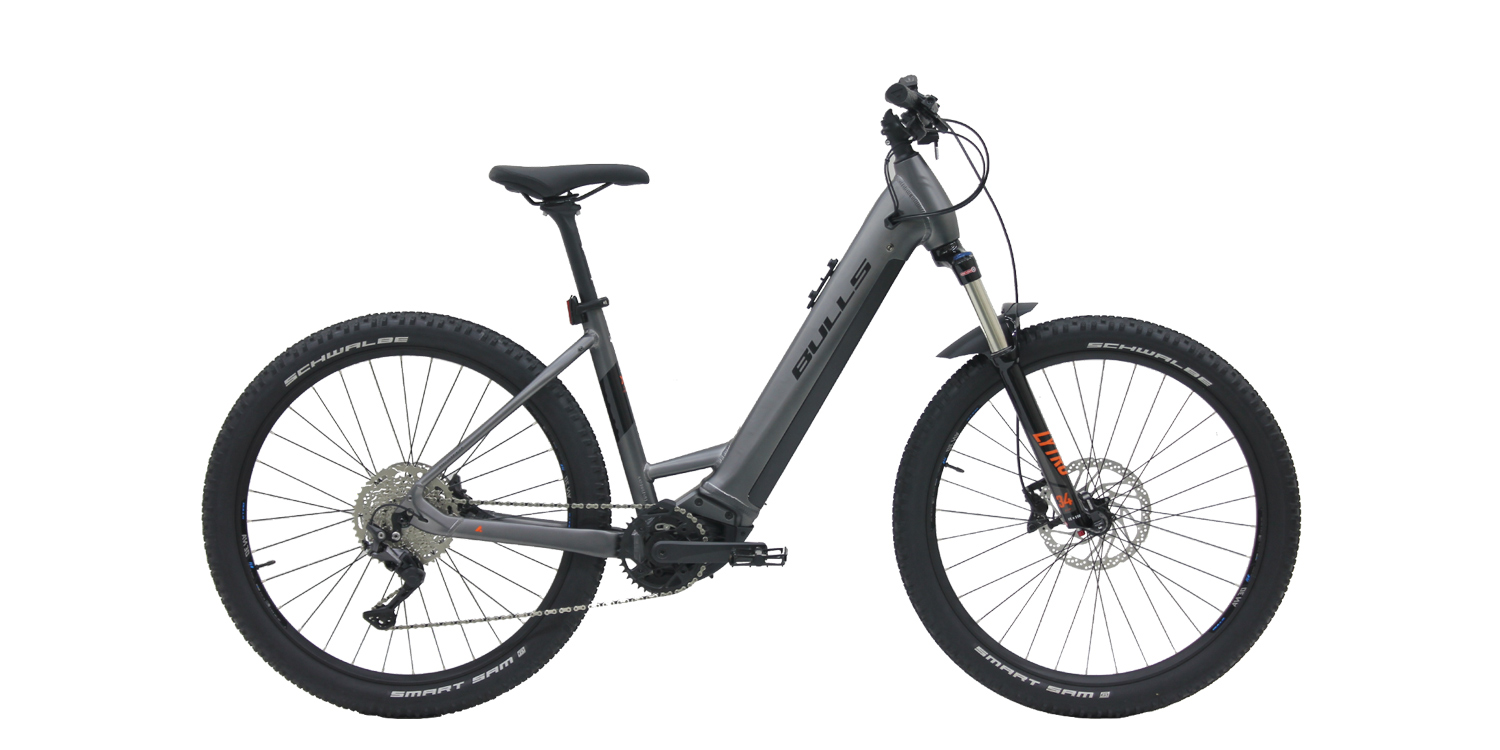
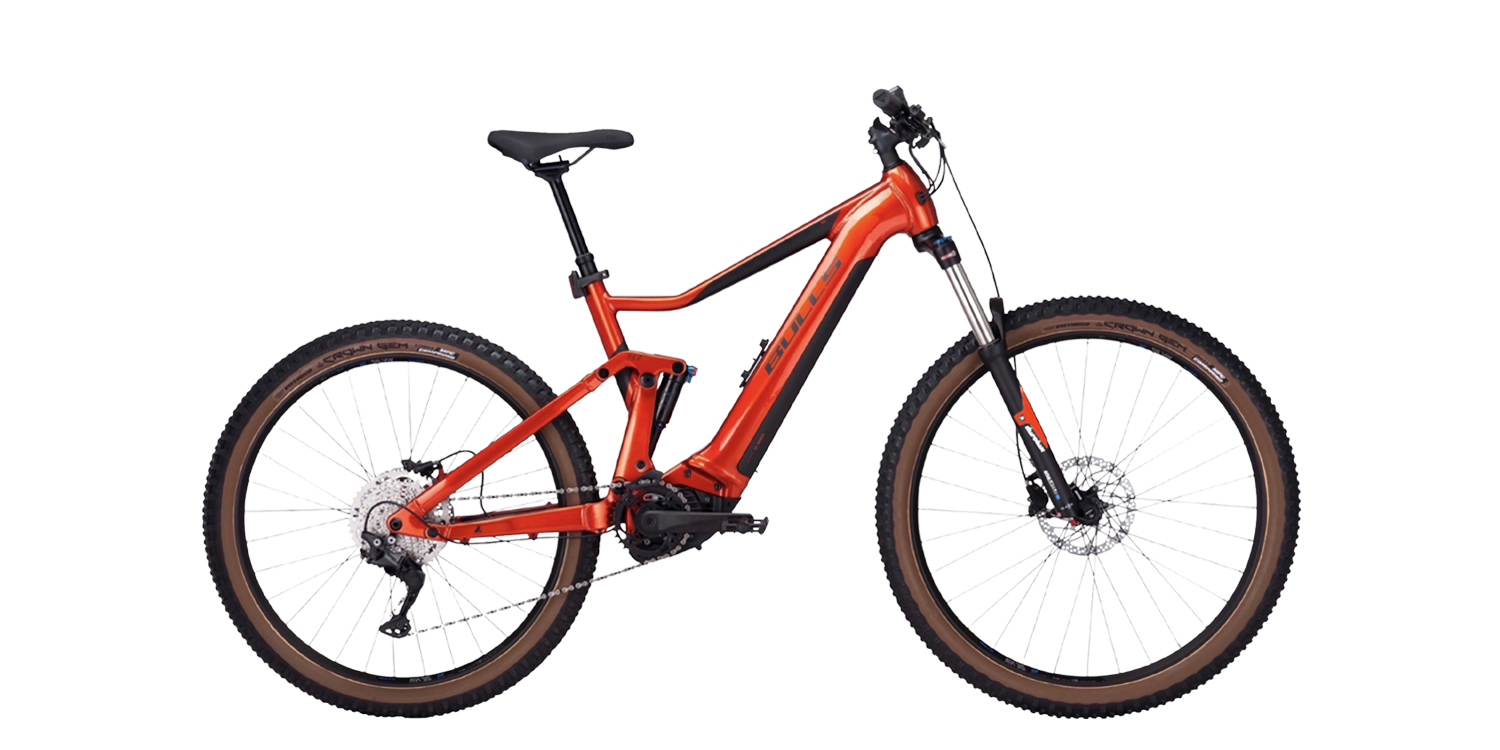

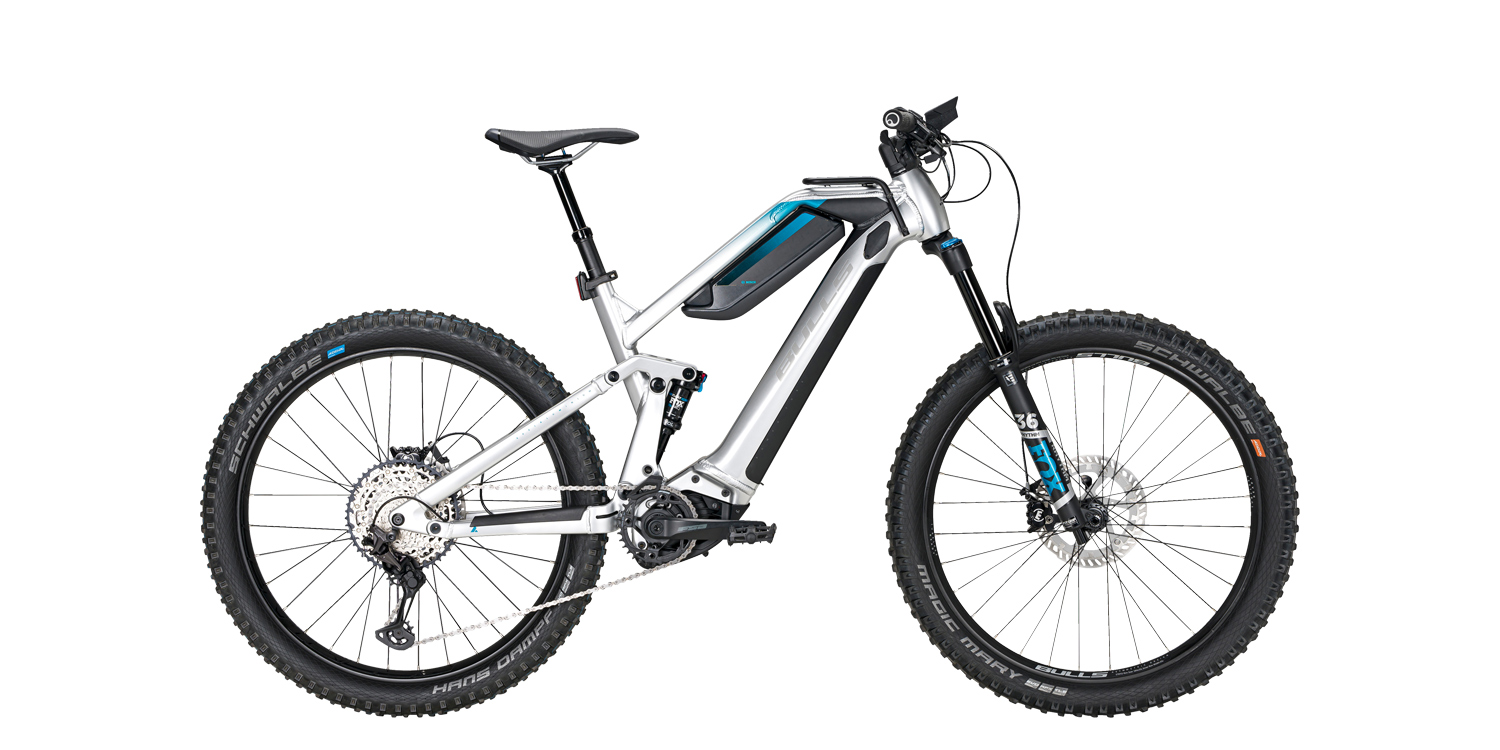
Reader Interactions